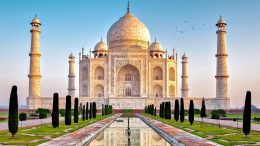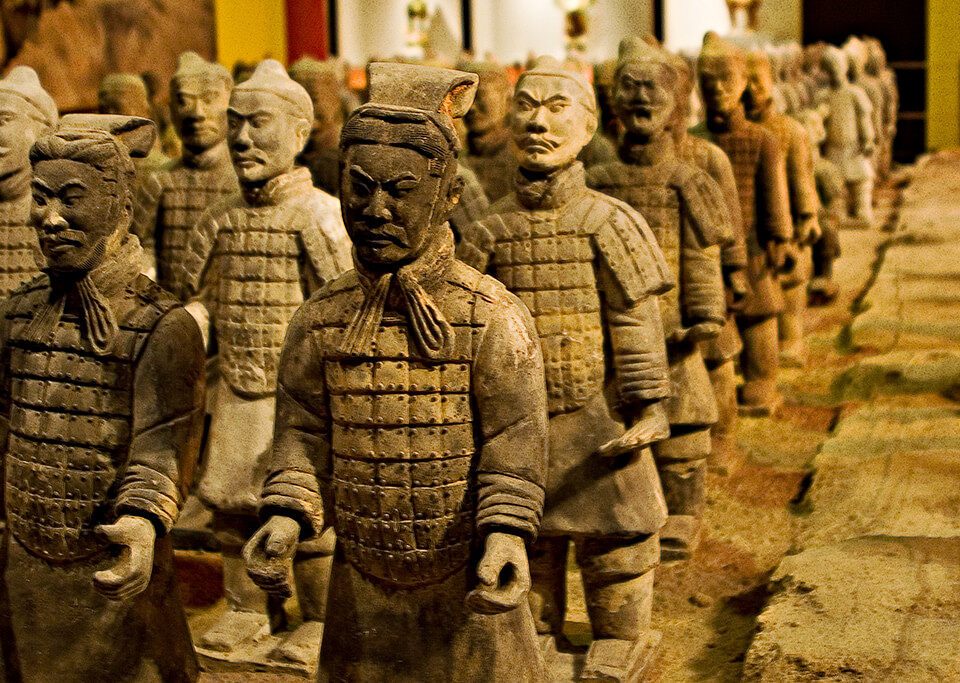The Taj Mahal: A Timeless Monument of Love in Agra
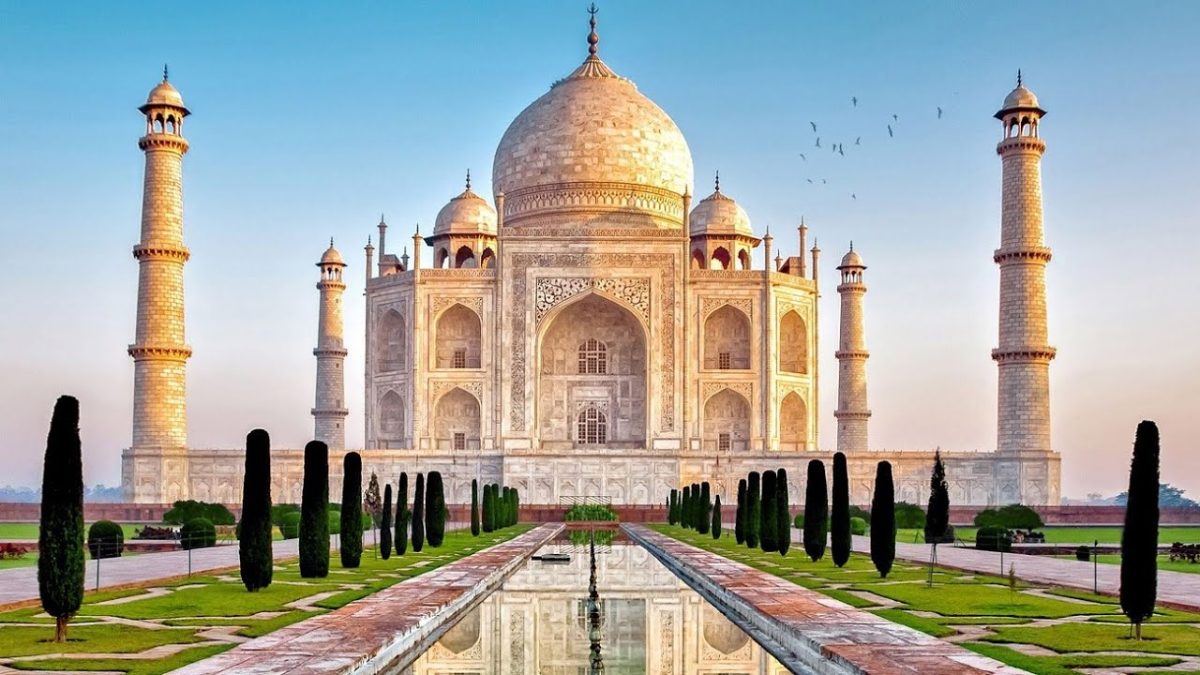
The Taj Mahal: A Timeless Monument of Love in Agra
The Taj Mahal, located in Agra, India, is one of the most iconic and universally admired masterpieces of world heritage. Built by the Mughal Emperor Shah Jahan in memory of his beloved wife Mumtaz Mahal, this white marble mausoleum stands as a symbol of eternal love and architectural brilliance. This comprehensive guide provides tourists with detailed information about the Taj Mahal, including its history, architectural features, cultural significance, and practical tips for visiting. It aims to offer a complete and unique perspective on one of the world’s most famous landmarks.
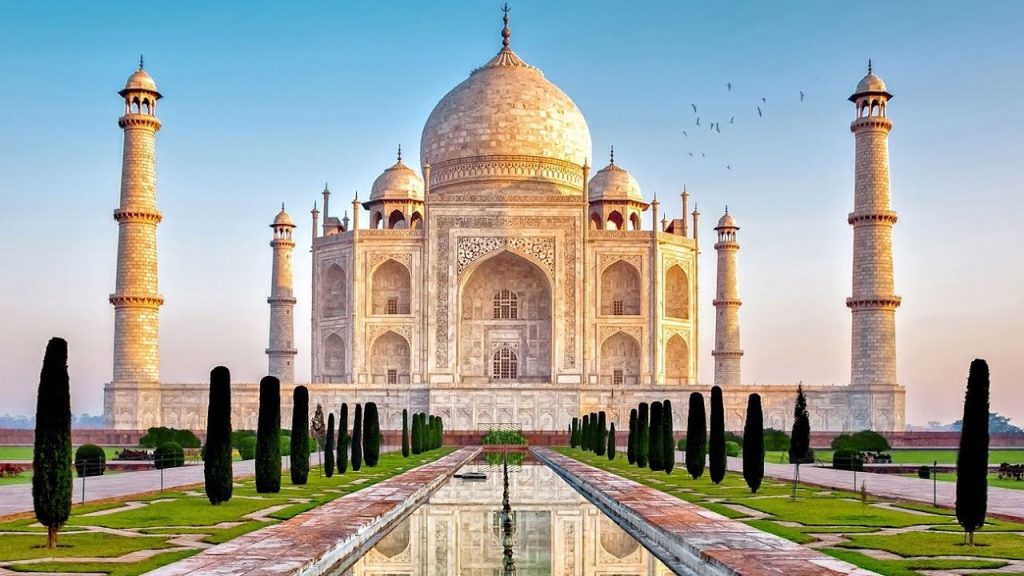
Historical Background
Construction and Purpose: The construction of the Taj Mahal began in 1632, following the death of Mumtaz Mahal, Shah Jahan’s favorite wife, during childbirth. Devastated by her loss, Shah Jahan commissioned the construction of a grand mausoleum to house her tomb. The project took about 22 years to complete, with thousands of artisans and craftsmen working under the guidance of Ustad Ahmad Lahauri, the principal architect.
Materials and Labor: The Taj Mahal is made primarily of white marble sourced from Makrana in Rajasthan. In addition to marble, precious and semi-precious stones were imported from various parts of Asia, including jade from China, turquoise from Tibet, and lapis lazuli from Afghanistan. The construction employed over 20,000 workers, including masons, stone-cutters, inlayers, carvers, painters, calligraphers, and dome-builders.
Shah Jahan’s Vision: Shah Jahan envisioned the Taj Mahal as a reflection of paradise on earth, combining elements of Persian, Islamic, and Indian architectural styles. The complex was designed to symbolize the emperor’s undying love for Mumtaz Mahal and to represent the beauty of the afterlife.
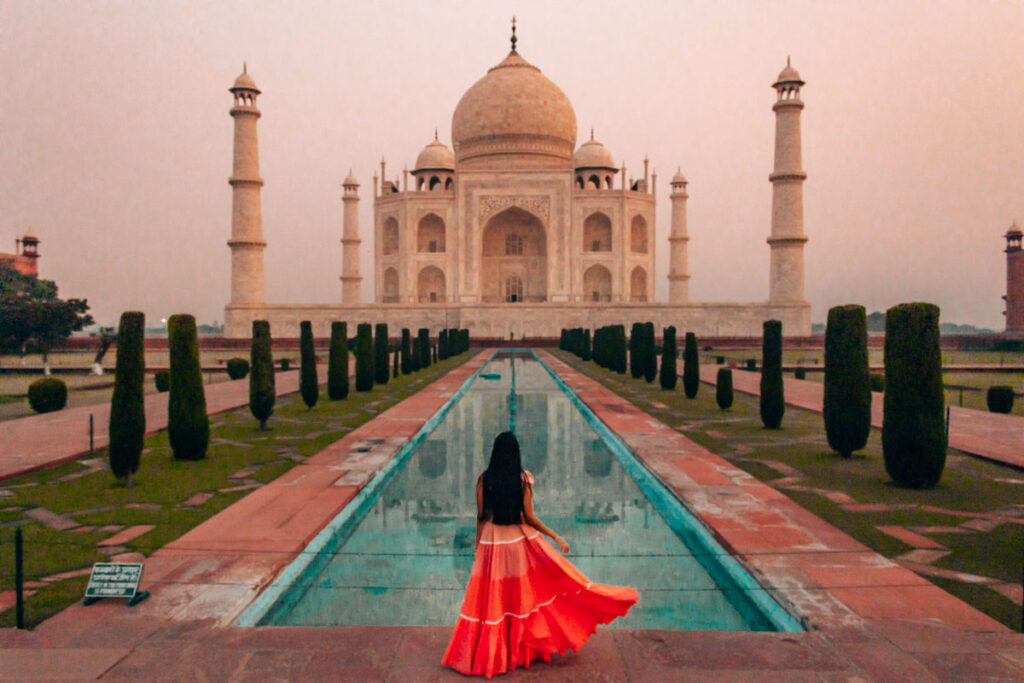
Architectural Features
Main Mausoleum: The main mausoleum is a symmetrical structure topped with a large central dome and surrounded by four smaller domes. The central dome rises to a height of 73 meters (240 feet) and is crowned by a finial. The main structure is flanked by four slender minarets, each standing at 40 meters (130 feet) tall, which were designed with a slight outward tilt to protect the mausoleum in case of an earthquake.
- Exterior Design: The exterior of the Taj Mahal is adorned with intricate carvings, inlaid flowers, and calligraphy. The calligraphic inscriptions are verses from the Quran, created with black marble inlay. The inlay work, known as pietra dura, involves the embedding of precious and semi-precious stones into the marble to create intricate floral designs.
- Interior Design: The interior of the mausoleum houses the cenotaphs of Mumtaz Mahal and Shah Jahan. The actual tombs are located in a lower chamber, directly beneath the cenotaphs. The inner chamber is an octagonal room, richly decorated with inlaid precious stones and intricate marble screens (jali).
Gardens and Layout: The Taj Mahal complex is set within a vast Mughal garden known as the Charbagh. The garden is divided into four quadrants by water channels and walkways, symbolizing the four rivers of paradise mentioned in Islamic tradition.
- Reflecting Pool: A large reflecting pool runs through the center of the garden, reflecting the image of the mausoleum and enhancing its beauty. The pool and fountains add to the serene and ethereal atmosphere of the complex.
- Symmetry and Proportions: The layout of the Taj Mahal complex is highly symmetrical, with the main mausoleum aligned along a north-south axis. The use of geometric proportions and symmetry is a hallmark of Mughal architecture, emphasizing balance and harmony.
Additional Structures: The Taj Mahal complex includes several other notable structures, adding to its grandeur and functionality.
- Mosque and Jawab: To the west of the main mausoleum is a mosque, made of red sandstone, which serves as a place of worship. To the east is the jawab, a building mirroring the mosque, providing architectural symmetry but without any religious function.
- Gateway: The main entrance to the Taj Mahal complex is through a grand gateway (darwaza) made of red sandstone and inlaid with white marble. The gateway is adorned with calligraphy and decorative motifs, setting the tone for the beauty within.
- Guest House: Located to the south of the complex, the guest house (mehmankhana) was used to accommodate visitors and pilgrims. Like the other structures, it is built in red sandstone with white marble decorations.
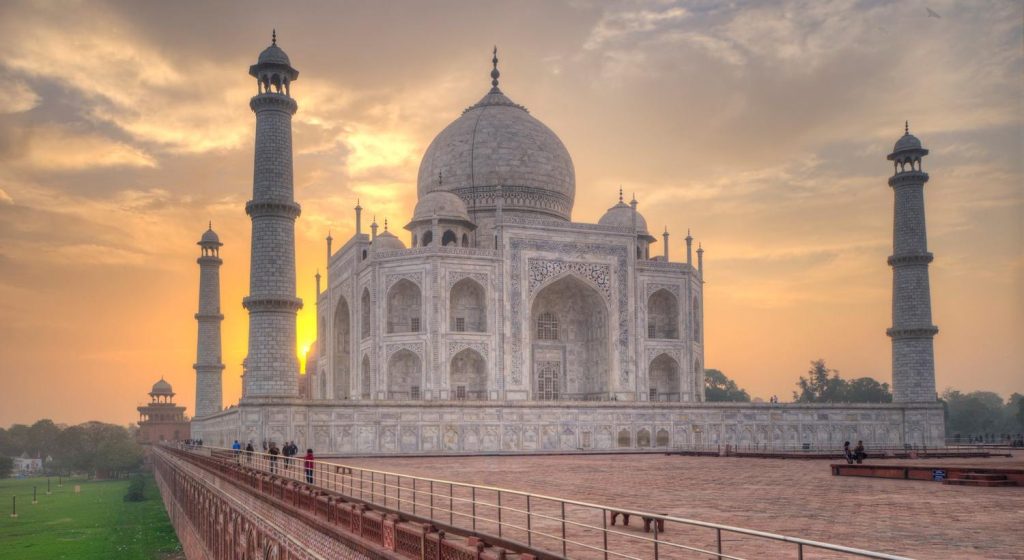
Cultural and Historical Significance
Symbol of Love: The Taj Mahal is widely regarded as a symbol of love and devotion. It represents Shah Jahan’s deep affection for Mumtaz Mahal and his desire to create a lasting tribute to her memory. This story of love and loss has captured the imagination of people around the world, making the Taj Mahal an enduring symbol of romance.
Architectural Masterpiece: The Taj Mahal is a masterpiece of Mughal architecture, blending elements from Persian, Islamic, and Indian architectural traditions. Its harmonious proportions, exquisite craftsmanship, and intricate decorations make it one of the finest examples of Mughal architecture.
World Heritage Site: In 1983, the Taj Mahal was designated a UNESCO World Heritage Site, recognizing its outstanding universal value as a cultural and historical monument. The designation ensures the preservation and protection of the site for future generations.
Tourist Attraction: The Taj Mahal is one of the most visited tourist attractions in the world, drawing millions of visitors each year. It is a source of national pride for India and a symbol of the country’s rich cultural heritage.
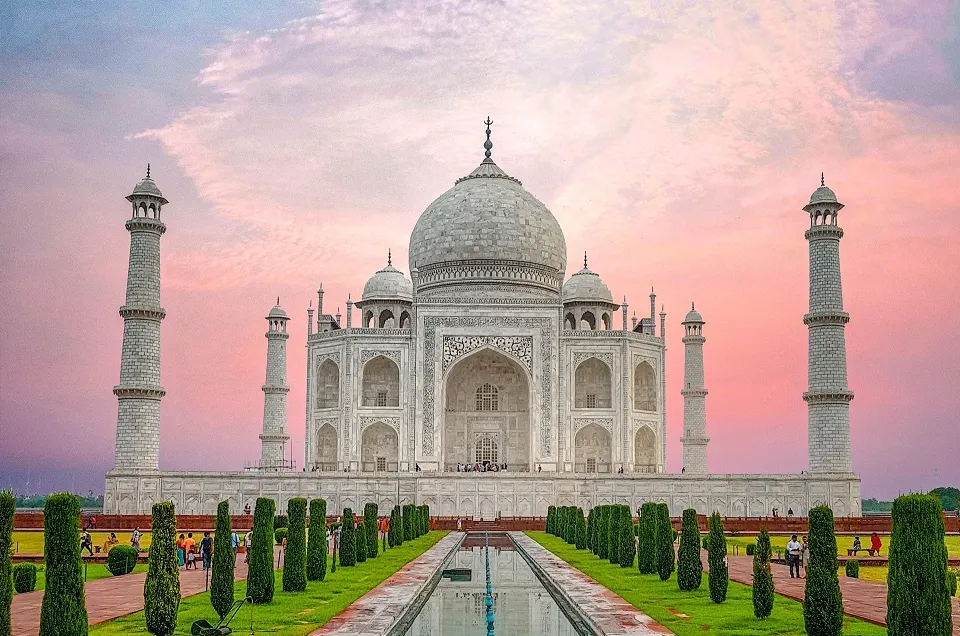
Practical Tips for Visiting the Taj Mahal
Best Time to Visit: The best time to visit the Taj Mahal is during the cooler months from October to March. During this period, the weather is more comfortable for exploring the site. Sunrise and sunset visits are particularly recommended for their stunning light effects on the white marble.
Getting There: The Taj Mahal is located in Agra, about 200 kilometers (124 miles) from Delhi. Agra is well-connected by road, rail, and air. The fastest way to reach Agra from Delhi is by train, with several express trains operating daily. Alternatively, visitors can travel by car or take a flight to Agra’s Kheria Airport.
Entry Fees and Timings: The Taj Mahal is open from sunrise to sunset, except on Fridays when it is closed for prayers. The entry fee for foreign tourists is approximately INR 1,100 (around $15), with discounts for children and senior citizens. Tickets can be purchased online or at the ticket counters near the entrance.
Guided Tours: Hiring a professional guide or joining a guided tour can enhance your experience by providing historical context and detailed explanations of the site’s features. Audio guides are also available for those who prefer a self-guided tour.
Visitor Tips:
- Security Checks: Be prepared for security checks at the entrance. Avoid carrying large bags, as only small bags are allowed inside. Prohibited items include food, tobacco products, and any sharp objects.
- Dress Appropriately: Wear comfortable clothing and shoes, as you will be walking and standing for extended periods. Since the Taj Mahal is a mausoleum, modest attire is recommended out of respect for the site’s cultural and religious significance.
- Photography: Photography is allowed in most areas of the Taj Mahal complex, but tripods and drones are prohibited. Be mindful of signs indicating no photography zones, particularly inside the main mausoleum.
Exploring Agra: While visiting the Taj Mahal, take the opportunity to explore other attractions in Agra, such as:
- Agra Fort: A UNESCO World Heritage Site, Agra Fort is a massive red sandstone fortress that served as the main residence of the Mughal emperors. It offers stunning views of the Taj Mahal from its ramparts.
- Fatehpur Sikri: Located about 40 kilometers (25 miles) from Agra, Fatehpur Sikri is a well-preserved Mughal city and another UNESCO World Heritage Site. It was built by Emperor Akbar and served as the Mughal capital for a brief period.
- Itimad-ud-Daulah’s Tomb: Often referred to as the “Baby Taj,” this beautiful mausoleum is the tomb of Mirza Ghiyas Beg, the father of Mumtaz Mahal. It is considered a precursor to the Taj Mahal in terms of design and craftsmanship.
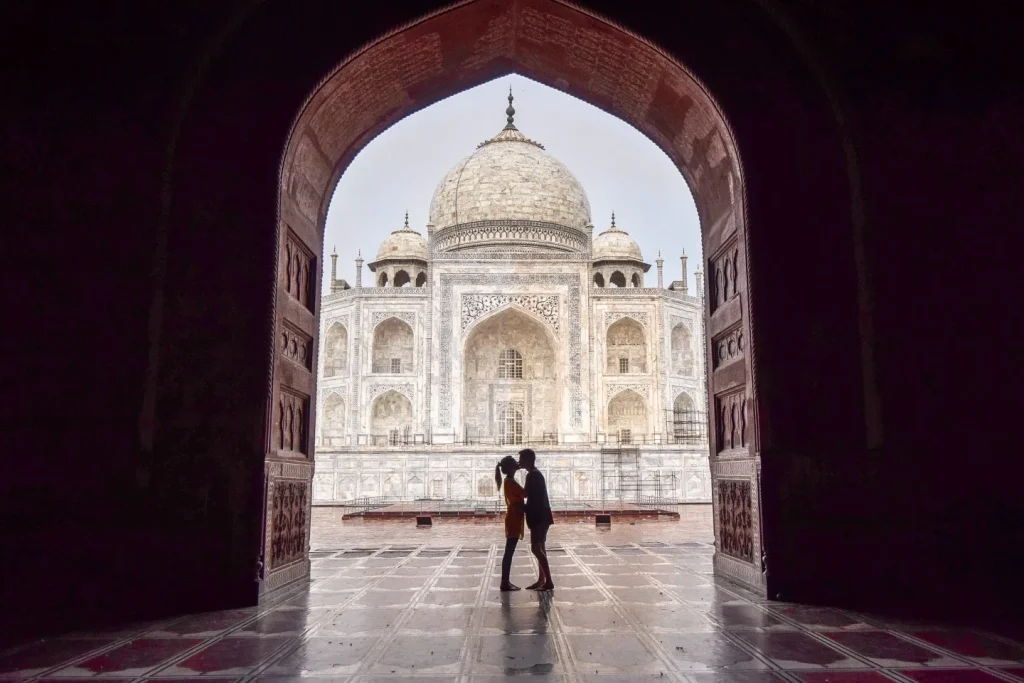
Unique Features and Emotional Impact
Changing Colors: One of the most remarkable features of the Taj Mahal is the way its appearance changes with the light. The white marble reflects different hues depending on the time of day and weather conditions, ranging from a warm golden glow at sunrise to a cool blue at dusk. This dynamic quality adds to the monument’s ethereal beauty.
Reflecting Pool: The reflecting pool in front of the Taj Mahal creates a mirror image of the mausoleum, enhancing its visual impact. The pool’s still waters symbolize tranquility and purity, complementing the overall design of the complex.
Symmetry and Harmony: The meticulous symmetry and harmonious proportions of the Taj Mahal are a testament to the architectural genius of its designers. Every element of the complex, from the layout of the gardens to the placement of the minarets, contributes to a sense of balance and unity.
Emotional Resonance: The story of Shah Jahan and Mumtaz Mahal imbues the Taj Mahal with deep emotional resonance. Visitors often feel a sense of awe and reverence as they contemplate the love and loss that inspired this magnificent monument.
Conclusion
The Taj Mahal, with its timeless beauty and profound historical significance, is truly one of the world’s greatest architectural achievements. From its stunning white marble facade and intricate inlay work to its serene gardens
and grandiose design, the Taj Mahal continues to captivate and inspire visitors from around the globe.
As a must-visit destination, the Taj Mahal offers travelers a unique opportunity to experience the rich cultural heritage of India and to connect with a story of enduring love and devotion. Whether exploring the intricate details of the main mausoleum, strolling through the tranquil gardens, or reflecting on the emotional legacy of Shah Jahan and Mumtaz Mahal, visitors are sure to leave with lasting memories.
Plan your visit to the Taj Mahal, embrace its unique features and historical significance, and discover why it remains one of the most beloved and iconic destinations in the world. From its majestic architecture and picturesque setting to its profound cultural impact, the Taj Mahal offers a magical journey into the heart of India’s rich and enduring heritage.
thecoins24 Bitcoin News Cryptocurrency airdrop theforex24 Forex News Aypa Group Aypa Website developer Aypa SEO
italyeducation تحصیل در ایتالیا تحصیل رایگان در ایتالیا پذیرش تحصیلی در ایتالیا دانشگاه های ایتالیا بورسیه تحصیلی ایتالیا Aypa Digital Marketing Forex Calculator
-
The Taj Mahal: A Timeless Monument of Love in Agra
The Taj Mahal: A Timeless Monument of Love in Agra The Taj Mahal, located in Agra, India, is one of the most iconic and universally admired […]

